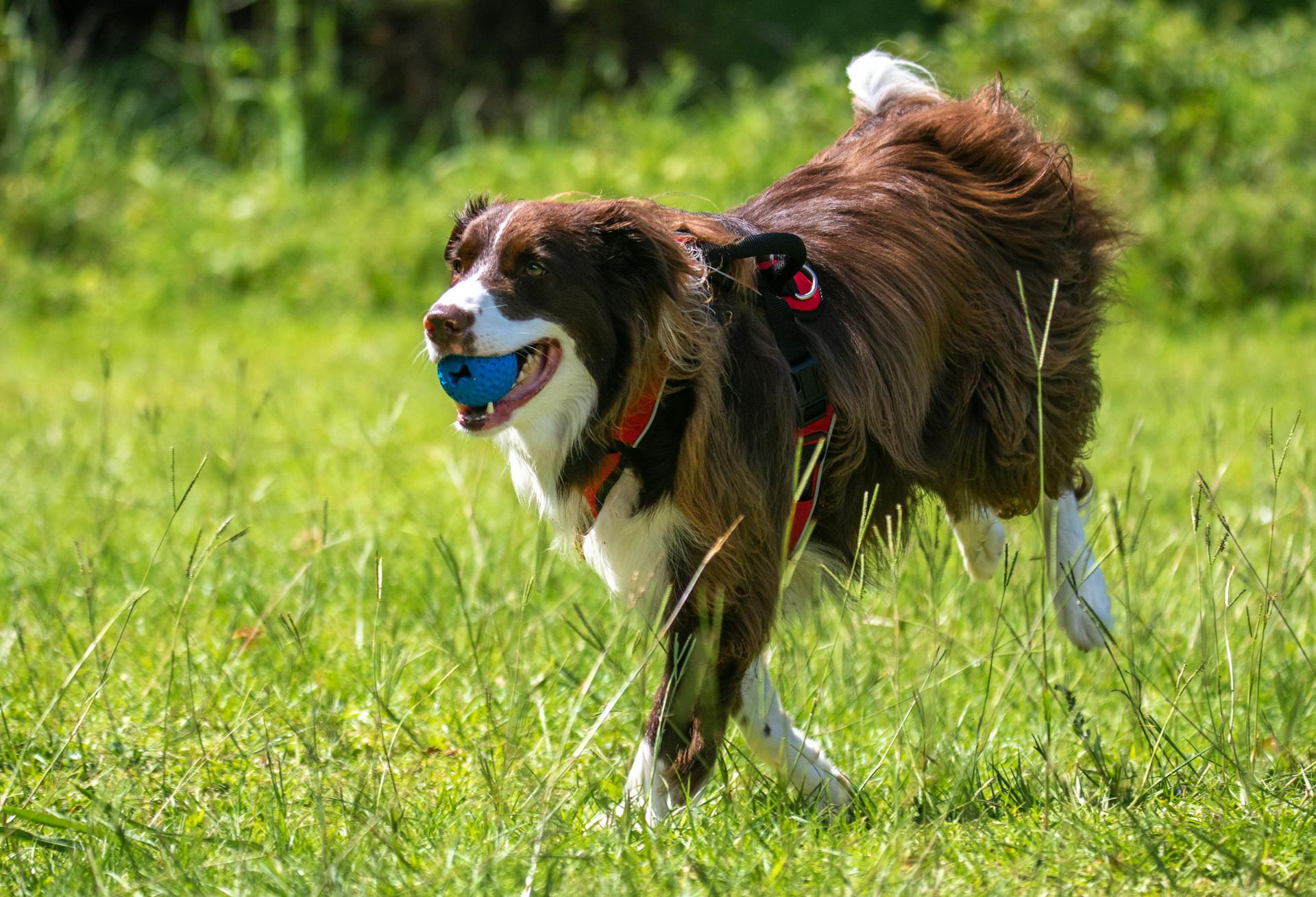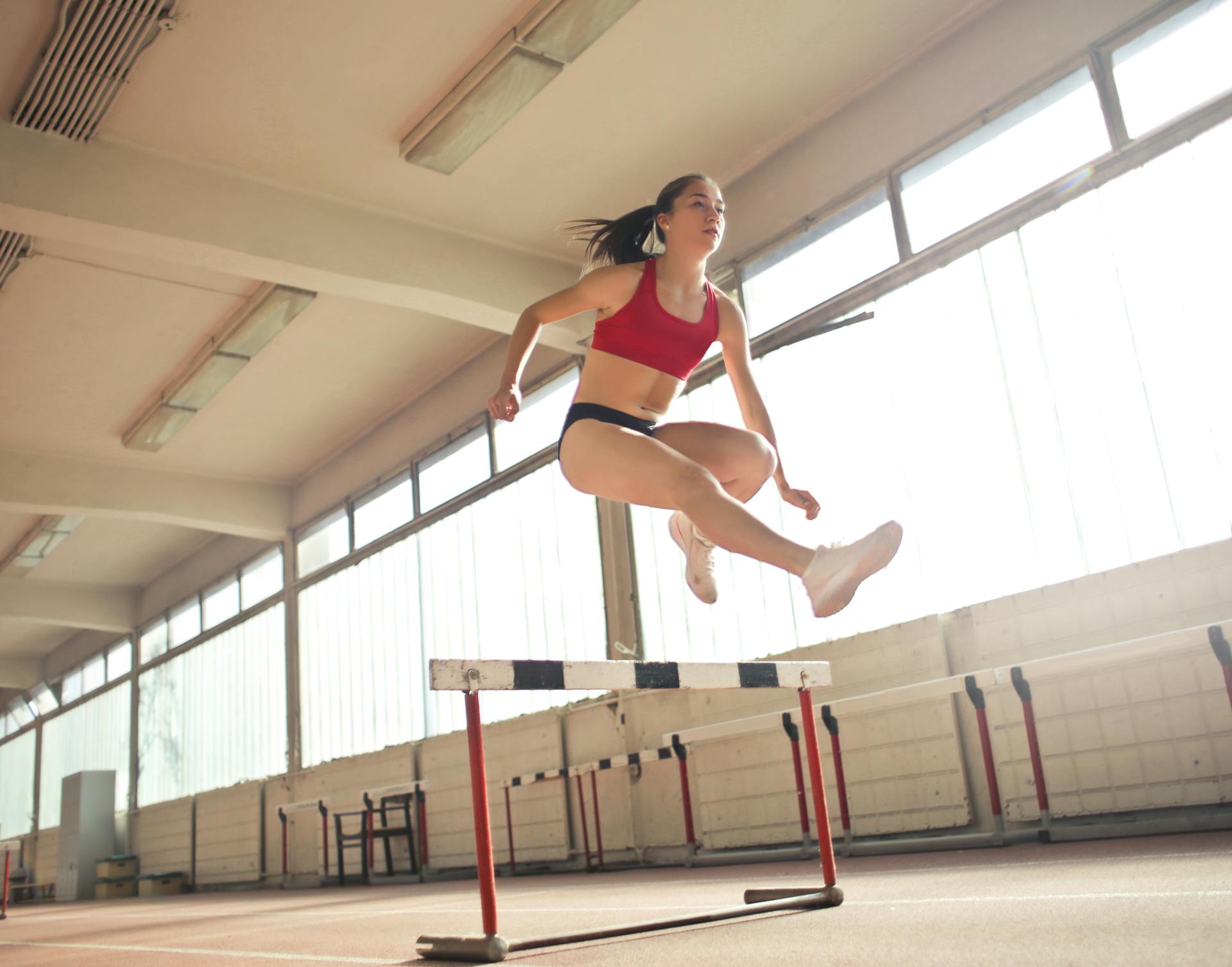
Dog agility kits can be a fantastic way to get your furry friend off the couch and active. With a kit, you can set up a mini obstacle course in your backyard or living room.
You can find dog agility kits that cater to different breeds and sizes of dogs. For example, smaller dogs may require a more compact kit with smaller obstacles.
A typical dog agility kit includes tunnels, jumps, and weave poles. These are the basic components that allow you to create a fun and challenging course for your dog.
Before investing in a kit, consider the space you have available and the type of activities you want to do with your dog.
Choosing the Right Equipment
Choosing the right equipment for your dog's agility kit is crucial for their safety and enjoyment. Select equipment that suits your dog's size, age, and fitness level.
Start with basic obstacles like jump bars, weave poles, and a teeter-totter, as they are fundamental components of any agility course. These will help your dog build strength and improve their sense of spatial awareness.
Consider your dog's breed characteristics when choosing equipment, as some breeds may benefit from specific exercises. For example, breeds prone to hip problems may benefit from exercises that are low-impact or gentle on their joints.
You can adjust the jump bars to different heights to increase the difficulty as your dog becomes more proficient. This will help your dog build strength in their hindquarters.
Here are the basic components of an agility course:
- Agility jump bars: A fundamental component of any agility course.
- Teeter-totter: Tests your dog's balance and confidence.
- Weave poles: Challenge your dog's agility and coordination.
As your dog progresses, you can add more challenging elements to the course, such as more weave poles or higher jump bars.
Building Your Own Equipment
Building your own equipment for a dog agility course can be a fun and rewarding experience. You can start by choosing the right materials, such as furniture-grade PVC pipe and fittings, which are durable and easy to work with.
For a basic agility course, you'll want to include several key pieces of equipment. A fundamental component is the agility jump bar, which helps build strength in your dog's hindquarters and improves its sense of spatial awareness.
You can adjust the jump bars to different heights to increase the difficulty as your dog becomes more proficient. This is especially important when starting out, as it allows your dog to build confidence and develop its skills.
A teeter-totter, also known as a seesaw, is another essential piece of equipment. It tests your dog's balance and confidence, requiring it to walk up one end of a plank and tip and lower on the opposite side.
To build a teeter-totter, you'll need a sturdy base and a plank that can be safely lifted and tilted. This obstacle is an excellent tool for teaching your dog to follow commands and trust your guidance.
Weave poles are another challenging obstacle that requires your dog's agility and coordination. This obstacle consists of a series of upright poles that your dog must navigate by weaving in and out.
Here are the basic components of an agility course to consider when building your own equipment:
- Agility jump bars
- Teeter-totter
- Weave poles
Remember to plan your course carefully and consider the available space in your yard before starting to build.
Dog Agility Kits

Dog agility kits are a great way to get started with training your dog. They usually contain a variety of pieces such as adjustable jumps, weave poles, and tunnels.
The gear in these kits is often sturdy and easy to assemble, making it perfect for backyard enthusiasts. Some kits even come with a large carrying bag for convenient storage.
Smaller dogs may find these kits more suitable, and buying a kit can be more cost-effective than purchasing individual pieces.
Equipment Options
If you're new to dog agility, a starter kit is a great place to begin. You can get a kit that includes an adjustable jump, weave poles, a tire jump, tunnel, and pause box, all in one convenient package.
These kits are often sturdy, easy to assemble, and come with a carrying bag, making it easy to transport them to the backyard or a training session. The price is likely lower than buying each piece individually.
Intriguing read: Dog Agility Jump Heights
For a more basic setup, consider a single bar jump, hoop jump, and weave poles. This equipment is easy to assemble, lightweight, and sturdy, making it perfect for backyard enthusiasts.
Agility kits can be tailored to your dog's size, with some kits better suited for smaller dogs. You can also choose from a variety of pieces, including jumps, weave courses, and tunnels, to create a customized course for your dog.
Whether you're a seasoned competitor or a backyard enthusiast, having some basic agility equipment can provide endless hours of exercise, entertainment, and bonding time with your dog.
If this caught your attention, see: Backyard Agility Course for Dogs
Course Equipment
When building a dog agility course, you'll want to include the right equipment to challenge and engage your furry friend. A fundamental component of any agility course is agility jump bars, which help build strength in your dog's hindquarters and improve its sense of spatial awareness.
You can adjust the jump bars to different heights to increase the difficulty as your dog becomes more proficient. This is especially important when you're just starting out, as you'll want to begin with lower heights and gradually increase them as your dog gains confidence.
Broaden your view: What Can You Feed Dogs Instead of Dog Food
A teeter-totter, also known as a seesaw, is another essential piece of equipment. It tests your dog's balance and confidence, requiring it to walk up one end of a plank and tip onto the opposite side. This obstacle is an excellent tool for teaching your dog to follow commands and trust your guidance.
Weave poles are another challenge for your dog's agility and coordination. This obstacle consists of a series of upright poles that your dog must navigate by weaving in and out. A good approach is to start with three poles and gradually increase to six or more as your dog improves.
Here's a quick rundown of the basic components of an agility course:
- Agility jump bars: help build strength and improve spatial awareness
- Teeter-totter: tests balance and confidence
- Weave poles: challenge agility and coordination
Sources
- https://fitpaws.com/products/agility-kit
- https://www.akc.org/expert-advice/training/dog-agility-equipment/
- https://www.cleanrun.com/category/dog_agility_equipment_for_training_and_competition/build_your_own_dog_agility_equipment/index.cfm
- https://bettersportingdogs.com/products/3-piece-essential-dog-agility-equipment-set
- https://www.thisoldhouse.com/pets/21016642/how-to-build-a-dog-agility-course
Featured Images: pexels.com


